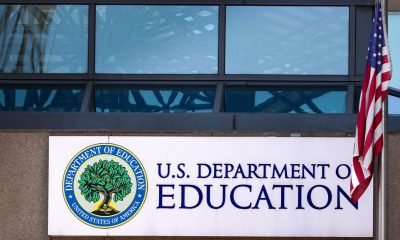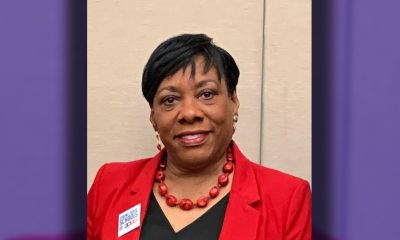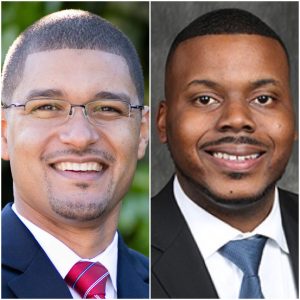Education
Special Education Sees ‘Historic’ Boost in New Funding
Lauren Rhim, executive director of the Center for Learner Equity, which advocates for students in special education, agreed. School districts need to carefully consider how they’re going to spend the money, she said.
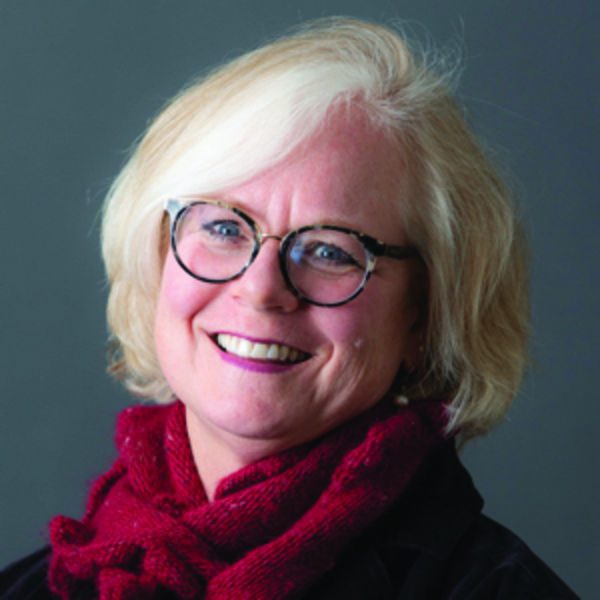
Special education in California has been showered with more than $1 billion in new state and federal money in recent weeks, enough to potentially transform a system that’s been underfunded for decades.
“It really is unprecedented and historic,” said Anjanette Pelletier, director of San Mateo County’s Special Education Local Area Plan. “The budget for 2021-22 holds amazing promise for students with disabilities. … It is an amazing time to be thinking about how to use one-time and ongoing resources to support students as we complete extended school-year programs and move into in-person learning in the fall.”
The state budget approved this week includes $656 million in new ongoing funding for special education, including a 4.05 percent increase to the base funding rate. The state also allotted $550 million in one-time funds for addressing disputes between parents and school districts, which are expected to surge in the next few months as students return to the classroom.
In March, the Biden administration set aside $122 billion for schools as part of the American Rescue Plan to help students, including those with disabilities, catch up after a year of distance learning. Of the total, California received $301 million, more than any other state.
On Thursday, the administration added $3 billion more for special education, with about $450 million earmarked for children ages 0-5 with disabilities. Identifying children with disabilities early and connecting them to services leads to better outcomes over the long term, according to a 2020 report by Policy Analysis for California Education.
As a presidential candidate, Joe Biden promised to fully fund special education. Under the Individuals with Disabilities Education Act, students are entitled to a free public education appropriate to their abilities, but the federal government has never reimbursed states for its full share of the cost of educating students with disabilities. Expenses can include services like one-on-one tutoring, occupational and speech therapy, behavioral therapy and technological devices that help students communicate.
Advocates were thrilled with the funding windfall, but cautioned that much will depend on how the money is spent.
“For this to be a game changer in California, it has to mean that all kids get access to high-quality core instruction,” said Sara Doutre, a special education expert at WestEd, an education research firm. “If it’s just more special ed — more separation, more exclusion — it isn’t going to solve anything.”
Lauren Rhim, executive director of the Center for Learner Equity, which advocates for students in special education, agreed. School districts need to carefully consider how they’re going to spend the money, she said.
“If they spend it on things that didn’t work before, then it’s not going to have much of an impact,” she said.
To get the most out of their funding, schools should focus on placing more students with disabilities in general-education classrooms and training teachers to recognize and help students with undiagnosed learning disabilities as they return to school, she said. Many students, especially younger ones, may have disabilities that were not diagnosed during remote learning. And alternately, some students will be misdiagnosed as having learning disabilities when in reality, they’re just behind.
She also suggested that districts invest in “grow your own” teacher pipelines, recruiting and hiring local residents to become special education teachers. The shortage of special education teachers statewide has worsened during the pandemic, as teachers retired early or left for other professions due to burnout.
If spent well, the money could have a significant impact for students with disabilities and their families, she said.
“It doesn’t quite get us there, but it’s very helpful,” said “Am I surprised? No. The investment reflects the commitment the Biden administration has made to support students with disabilities. I think everyone in the special education community right now is saying, ‘Thank you, thank you, thank you.’”
The state’s investment in special education dispute resolution may also have a big impact. During the pandemic, many students with disabilities fell behind because of the challenges of delivering special services virtually. At the same time, some districts have been slow to assess students who might be eligible for special education or need their learning plans updated, leading to a huge backlog in some districts.
Denise Marshall, chief executive of the Council of Parent Attorneys and Advocates, said the funding boost should ease some tensions between families and school districts in the wake of the pandemic.
“The Covid-19 pandemic has placed a tremendous and unprecedented strain on schools, districts, educators, families and students,” she said. “While many of (our) members report that districts are striving to work collaboratively with families to educate students during this challenging time, we also know too many families are not being offered options that meet the full requirements of federal law.”
Bay Area
Five Years After COVID-19 Began, a Struggling Child Care Workforce Faces New Threats
Five years ago, as COVID-19 lockdowns and school closures began, most early educators continued to work in person, risking their own health and that of their families. “Early educators were called essential, but they weren’t provided with the personal protective equipment they needed to stay safe,” said CSCCE Executive Director Lea Austin. “There were no special shopping hours or ways for them to access safety materials in those early and scary months of the pandemic, leaving them to compete with other shoppers. One state even advised them to wear trash bags if they couldn’t find PPE.”
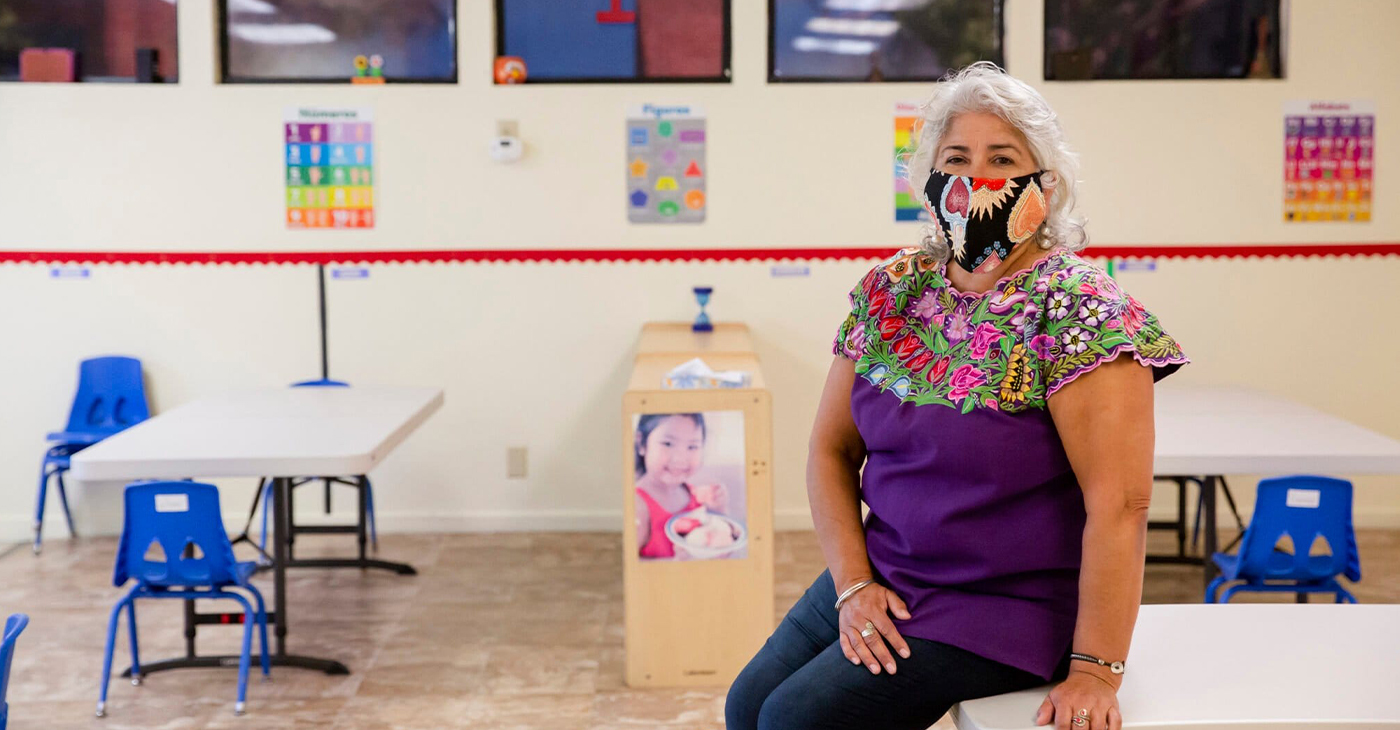
UC Berkeley News
In the first eight months of the COVID-19 pandemic alone, 166,000 childcare jobs were lost across the nation. Significant recovery didn’t begin until the advent of American Rescue Plan Act (ARPA) Child Care Stabilization funds in April 2021.
Today, child care employment is back to slightly above pre-pandemic levels, but job growth has remained sluggish at 1.4% since ARPA funding allocations ended in October 2023, according to analysis by the Center for the Study of Child Care Employment (CSCCE) at UC Berkeley. In the last six months, childcare employment has hovered around 1.1 million.
Yet more than two million American parents report job changes due to problems accessing child care. Why does the childcare sector continue to face a workforce crisis that has predated the pandemic? Inadequate compensation drives high turnover rates and workforce shortages that predate the pandemic. Early childhood educators are skilled professionals; many have more than 15 years of experience and a college degree, but their compensation does not reflect their expertise. The national median hourly wage is $13.07, and only a small proportion of early educators receive benefits.
And now a new round of challenges is about to hit childcare. The low wages paid in early care and education result in 43% of early educator families depending on at least one public support program, such as Medicaid or food stamps, both of which are threatened by potential federal funding cuts. Job numbers will likely fall as many early childhood educators need to find jobs with healthcare benefits or better pay.
In addition, one in five child care workers are immigrants, and executive orders driving deportation and ICE raids will further devastate the entire early care and education system. These stresses are part of the historical lack of respect the workforce faces, despite all they contribute to children, families, and the economy.
Five years ago, as COVID-19 lockdowns and school closures began, most early educators continued to work in person, risking their own health and that of their families. “Early educators were called essential, but they weren’t provided with the personal protective equipment they needed to stay safe,” said CSCCE Executive Director Lea Austin. “There were no special shopping hours or ways for them to access safety materials in those early and scary months of the pandemic, leaving them to compete with other shoppers. One state even advised them to wear trash bags if they couldn’t find PPE.”
The economic impact was equally dire. Even as many providers tried to remain open to ensure their financial security, the combination of higher costs to meet safety protocols and lower revenue from fewer children enrolled led to job losses, increased debt, and program closures.
Eventually, the federal government responded with historic short-term investments through ARPA, which stabilized childcare programs. These funds provided money to increase pay or provide financial relief to early educators to improve their income and well-being. The childcare sector began to slowly recover. Larger job gains were made in 2022 and 2023, and as of November 2023, national job numbers had slightly surpassed pre-pandemic levels, though state and metro areas continued to fluctuate.
Many states have continued to support the workforce after ARPA funding expired in late 2024. In Maine, a salary supplement initiative has provided monthly stipends of $240-$540 to educators working in licensed home- or center-based care, based on education and experience, making it one of the nation’s leaders in its support of early educators. Early educators say the program has enabled them to raise wages, which has improved staff retention. Yet now, Governor Janet Mills is considering cutting the stipend program in half.
“History shows that once an emergency is perceived to have passed, public funding that supports the early care and education workforce is pulled,” says Austin. “You can’t build a stable childcare workforce and system without consistent public investment and respect for all that early educators contribute.”
The Center for the Study of Childcare Employment is the source of this story.
Activism
District Delegates to State Democratic Party Central Committee Meeting Celebrate Election Victory
Delegates and elected officials were excited for the future of the Democratic Party and making its focus on 1) creating more affordable housing, 2) supporting education, 3) helping working families, and 4) protecting the environment and addressing climate change, with a focus on practical and realistic policy efforts that could have a meaningful impact.
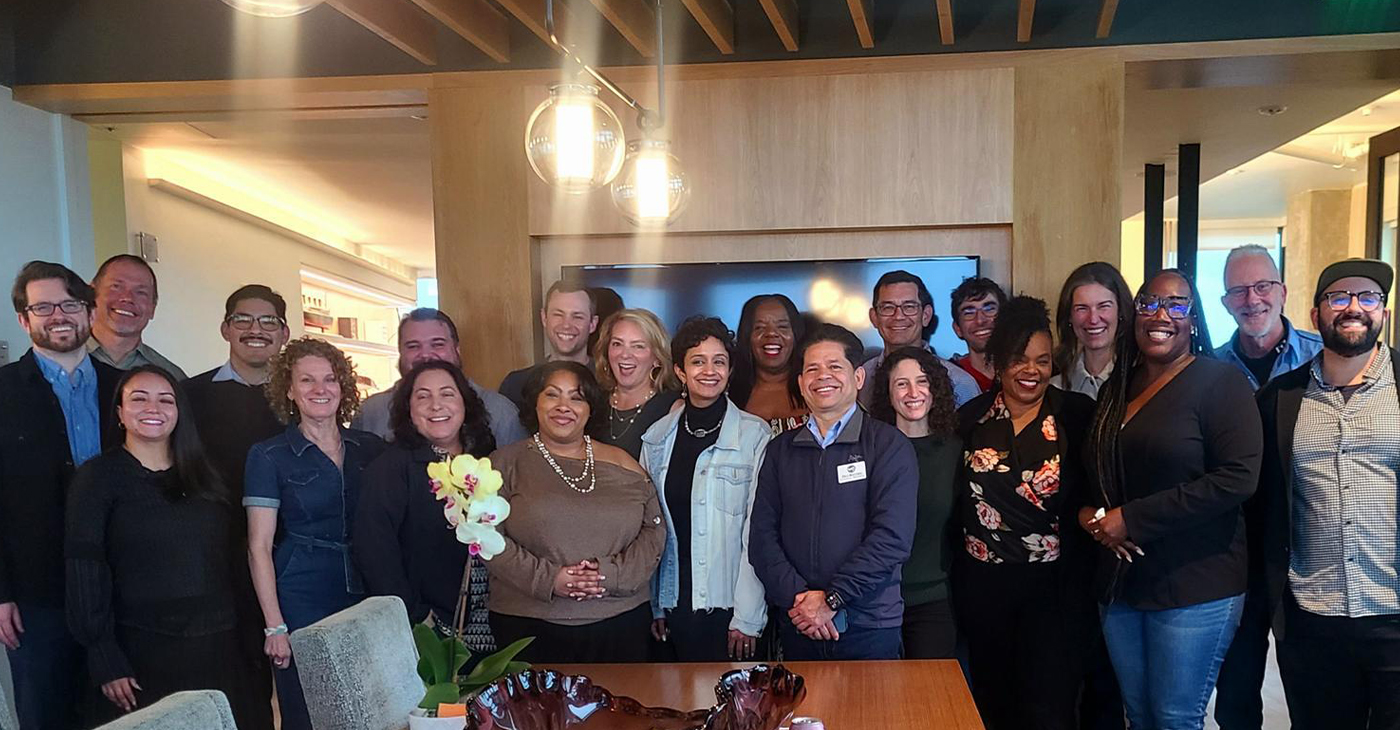
By Ben Gould
Special to The Post
Winners of the February 2025 Assembly District Election Meetings (ADEM) for Assembly Districts 14 and 18 met on Sunday, March 16 to discuss priorities for the California Democratic Party convention in Anaheim coming up in May.
The winners for Assembly District 18 are Genice Jacobs, Bobbi Lopez, Shawn Danino, Ben Gould, Zac Bowling, Nate Hanson, Cathy Adams, Sam Gould, Lauren Wilson, Ashlee Jemmott, and former Oakland School Board Director Sam Davis.
The winners for Assembly District 14 are: Sarah Bell, Neil Tsutsui, Hercules Councilmember Dilli Bhattarai, former Berkeley School Board Director Laura Babitt, former Piedmont Mayor Teddy Gray King, and former Albany Mayor Nick Pilch.
They were joined by Oakland Councilmember Janani Ramachandran, Emeryville Councilmember Courtney Welch, and BART Director Victor Flores to help celebrate their victory.
Delegates and elected officials were excited for the future of the Democratic Party and making its focus on 1) creating more affordable housing, 2) supporting education, 3) helping working families, and 4) protecting the environment and addressing climate change, with a focus on practical and realistic policy efforts that could have a meaningful impact.
Activism
Golden State Warriors Program Is Inspiring Next Generation of Female Engineers
Breaking down barriers and biases that deter young girls from pursuing STEAM subjects is essential for creating a level playing field and ensuring equal opportunities for all. By challenging stereotypes and promoting a culture of inclusivity and diversity in STEAM fields, experts believe young girls can be empowered to pursue their interests and aspirations without limitations confidently. Encouraging mentorship, providing access to resources, and celebrating girls’ achievements in STEAM are all crucial steps in creating a supportive environment that fosters success.

By Y’Anad Burrell
The Golden State Warriors and e-commerce giant Rakuten are joining forces to inspire the next generation of female engineers through Building STEAM Futures, part of The City Calls campaign.
Organizers say the initiative is founded on the idea that science, technology, engineering, arts, and mathematics (STEAM) are crucial fields for innovation and progress, and empowering young girls to pursue careers in these areas is more important than ever. Studies consistently show that girls are underrepresented in STEAM fields, resulting in a gender disparity that limits potential and hinders diversity.
Breaking down barriers and biases that deter young girls from pursuing STEAM subjects is essential for creating a level playing field and ensuring equal opportunities for all. By challenging stereotypes and promoting a culture of inclusivity and diversity in STEAM fields, experts believe young girls can be empowered to pursue their interests and aspirations without limitations confidently. Encouraging mentorship, providing access to resources, and celebrating girls’ achievements in STEAM are all crucial steps in creating a supportive environment that fosters success.
On Saturday, March 8, International Women’s Day, the Warriors and Rakuten hosted 20 middle school girls from Girls Inc. of Alameda County at Chase Center’s Above the Rim for a hands-on bridge-building experience. The young girls from Girls, Inc. of Alameda County had an opportunity to design, build and test their own bridge prototypes and learn the fundamentals of bridge construction from the Engineering Alliance and the UC Berkeley Steel Bridge Team.
This STEAM experience for the girls followed the first session in January, where they took a behind-the-scenes tour of the Golden Gate Bridge, learning about its design and construction from industry experts. The City Calls campaign, tipped off with the unveiling the Warriors’ new bridge-themed City Edition jerseys and court design earlier this year.
-

 Activism4 weeks ago
Activism4 weeks agoOakland Post Endorses Barbara Lee
-

 Activism4 weeks ago
Activism4 weeks agoOakland Post: Week of March 28 – April 1, 2025
-

 Activism3 weeks ago
Activism3 weeks agoOakland Post: Week of April 2 – 8, 2025
-

 #NNPA BlackPress3 weeks ago
#NNPA BlackPress3 weeks agoTrump Profits, Black America Pays the Price
-

 Activism2 weeks ago
Activism2 weeks agoOakland Post: Week of April 9 – 15, 2025
-

 #NNPA BlackPress3 weeks ago
#NNPA BlackPress3 weeks agoHarriet Tubman Scrubbed; DEI Dismantled
-

 #NNPA BlackPress3 weeks ago
#NNPA BlackPress3 weeks agoLawmakers Greenlight Reparations Study for Descendants of Enslaved Marylanders
-

 #NNPA BlackPress3 weeks ago
#NNPA BlackPress3 weeks agoTrump Targets a Slavery Removal from the National Museum of African-American History and Culture


